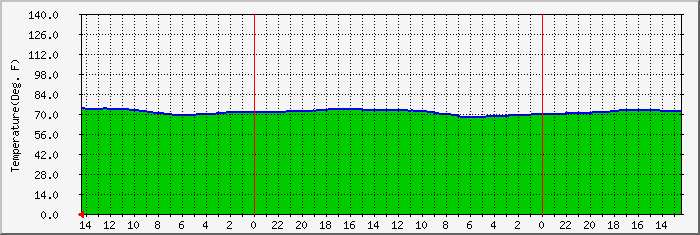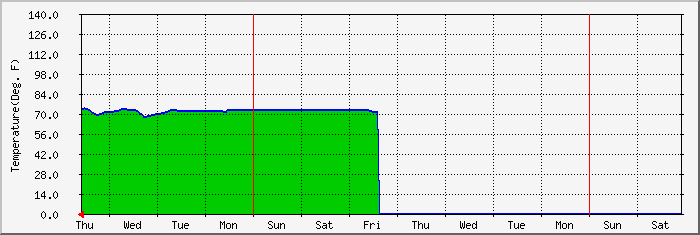Graph Critical Environmental Conditions
The ENVIROMUX Enterprise Server Environment Monitoring System graphs data from its sensors using MRTG.

ENVIROMUX-SEMS-16 (Front & Back)
|
NTI's ENVIROMUX Enterprise Server Environment Monitoring System Graphs Critical Environmental Conditions with MRTG Monitoring environmental conditions around servers, work stations or data centers helps prevent the damages caused to valuable equipment by environmental conditions like temperature, humidity, water leakage etc. The Network Technologies Inc ENVIROMUX® Server Environment Monitoring System monitors environmental conditions and notifies the administrator or staff via email, SNMP traps, web-page alerts etc. if a sensor goes out of range of a pre-configured limit. Graphing using MRTG (Multi Router Traffic Grapher) provides a visual representation of the critical environmental conditions being monitored. MRTG generates HTML pages containing regularly updated PNG images providing graphical trending of time-series data. The graphs display daily, weekly, monthly and yearly statistics of the environmental conditions being monitored.
Internal Temperature: Daily Graph (5 Minute Average) 
Internal Temperature: Weekly Graph (30 Minute Average) 
Configure MRTG to graph environmental conditions using the ENVIROMUX Server Environment Monitoring System: 1) Install MRTG on your computer using the MRTG installation guide.
2) Configure the ENVIROMUX server environment monitoring system to monitor the environmental conditions you want. 3) Create a MRTG configuration file that controls the graphs.
5) Create a cron job to run MRTG on UNIX machines. Use a daemon on Windows. 6) Modify MRTG graphs.
| |||||||||||||||||